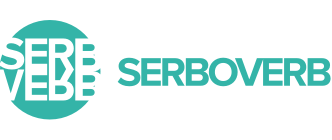This is the first SerboVerb quiz. The quiz consists of ten questions about a series of verbs that you will discover in a funny song!
Conjugate & Enjoy
This is the first SerboVerb quiz. The quiz consists of ten questions about a series of verbs that you will discover in a funny song!
Conjugate & Enjoy
Serbian verbs change their forms. This change follows certain criteria and it is called conjugation or verbal inflection. In this post you will find the main features that affect the formation of Serbian verb forms.
When conjugated, the verb is the main element of a sentence. Its typical purpose is to situate an action, process or state in time, and to provide information on the subject of that action, process or state.
Each Serbian verb form can carry some of the following information:
• person: whether the subject of the verb is the speaker, the interlocutor, or the person or thing spoken about.
• number: whether the verb is in the singular or the plural, e.g. whether the subject is the ‘I’ form or the ‘we’ form.
• gender: whether the verb is in the masculine, the feminine or the neuter form. • tense: whether the verb indicates the present, past or future.
• mood: whether the verb expresses a statement, a command, a hypothesis or a possibility.
• voice: whether the verb indicates that the subject performs or undergoes the action.
• affirmation or negation.
All Serbian verbs are marked for aspect (whether the verb indicates that duration of a state, action or process is bounded or not).
Welcome to SerboVerb blog.
SerboVerb is a free application allowing to conjugate thousands of Serbian verbs in a friendly way. Since the verb is the key element of the sentence, conjugating verbs is the core competence you need to build when learning Serbian as a foreign language.
SerboVerb is the best way to learn Serbian verb conjugation!
Conjugate & Enjoy
This site uses cookies. By continuing to browse the site, you are agreeing to our use of cookies.
OKLearn moreWe may request cookies to be set on your device. We use cookies to let us know when you visit our websites, how you interact with us, to enrich your user experience, and to customize your relationship with our website.
Click on the different category headings to find out more. You can also change some of your preferences. Note that blocking some types of cookies may impact your experience on our websites and the services we are able to offer.
These cookies are strictly necessary to provide you with services available through our website and to use some of its features.
Because these cookies are strictly necessary to deliver the website, you cannot refuse them without impacting how our site functions. You can block or delete them by changing your browser settings and force blocking all cookies on this website.
We also use different external services like Google Webfonts, Google Maps and external Video providers. Since these providers may collect personal data like your IP address we allow you to block them here. Please be aware that this might heavily reduce the functionality and appearance of our site. Changes will take effect once you reload the page.
Google Webfont Settings:
Google Map Settings:
Vimeo and Youtube video embeds:
You can read about our cookies and privacy settings in detail on our Privacy Policy Page.
Privacy Policy